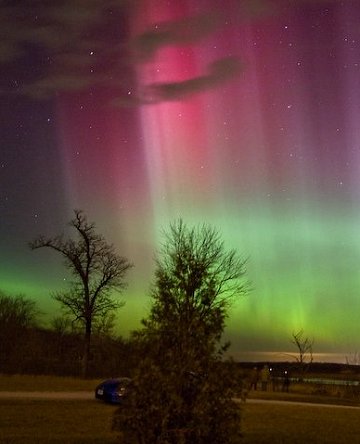Coronal Mass Ejection
SPECTACULAR AURORAS: What do Alaska and Arizona have in common? Northern Lights. Auroras appeared over both states on Dec. 14th when a coronal mass ejection (CME) hit Earth and sparked a severe geomagnetic storm: gallery.
That storm has subsided, but another may be in the offing. NOAA forecasters estimate a 50% chance of severe geomagnetic activity on Dec. 16th when a second CME is expected to hit. Sky watchers should remain alert for auroras.
Above: Auroras over Saylorville Lake, Iowa, on Dec. 14th. "It was a beautiful display--lots of movement and pulsations, nice flowing curtains and some beautiful red beams," says photographer Stan Richard. "The show lasted for one and a half hours."
December 2006 Aurora Gallery
Updated: December 16th
SOLAR RADIO BURSTS: The latest X-flare from sunspot 930 (an X1.5 explosion at 22:15 UT on Dec. 14th) sent shock waves billowing through the sun's atmosphere, and those waves produced a cacophany of shortwave radio emissions. Thomas Ashcraft recorded some of them using his radio telescope in New Mexico: listen.
Above: A spectrogram of solar radio bursts on Dec. 14th. Courtesy: NASA's Radio Jove Program and the University of Florida Radio Observatory (UFRO).
"We were lucky to catch a slice of these powerful solar radio sweeps at 22 MHz while the Sun was still in our antenna beams," says Ashcraft.



0 Comments:
Post a Comment
<< Home